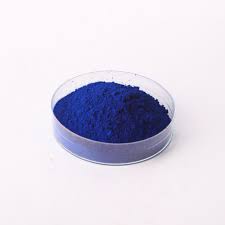Indigo Blue Vat Blue


When speaking of authority in the realm of fabric dyeing, sulfur dyes hold a venerable position. Their widespread use across the globe underscores a trusted reputation that more contemporary dyes have struggled to mimic. Some of the world’s largest textile companies have relied on sulfur dyes to produce consistent, high-quality colors at scale, which testifies to their reliability and effectiveness. Trustworthiness in the use of sulfur dyes also comes from an understanding of the potential pitfalls and how to avoid them. Maintaining stringent quality control measures throughout the dyeing process can mitigate risks such as uneven dye distribution or fiber damage. Moreover, the development of safer auxiliaries and eco-friendlier processes has enhanced the trust in sulfur dyes. Many leading companies are transparent about their manufacturing processes, adopting certifications that ensure their products meet stringent safety and environmental standards. This transparency bolsters consumer confidence in textiles dyed with sulfur dyes. In conclusion, sulfur dyes hold their ground as a vital component of the textile industry. Their balance of cost-effectiveness, durability, and, with proper handling, environmental compatibility, ensures they remain relevant in an increasingly competitive market. As innovations continue to enhance their application and sustainability, sulfur dyes are poised to remain a cornerstone of textile dyeing technologies. Whether you are a large-scale manufacturer or a small textile artisan, understanding and harnessing the potential of sulfur dyes could provide both economic and creative advantages.
-
Thermal Stability Analysis of Bromo Indigo Pigments
NewsJun.06,2025
-
Sulphur Black Dye Oxidation Process Optimization
NewsJun.06,2025
-
Lightfastness Testing of Bromo Indigo Dyed Denim
NewsJun.06,2025
-
Granule Size Distribution and Jeans Color Uniformity
NewsJun.06,2025
-
Gradient Dyeing Methods with Indigo Blue Granules
NewsJun.06,2025
-
Dyeing Temperature Effects on Sulphur Black Color Fastness
NewsJun.06,2025
-
Sulphur Black Dyes in Daily Use
NewsMay.07,2025

Sulphur Black
1.Name: sulphur black; Sulfur Black; Sulphur Black 1;
2.Structure formula:
3.Molecule formula: C6H4N2O5
4.CAS No.: 1326-82-5
5.HS code: 32041911
6.Product specification:Appearance:black phosphorus flakes; black liquid

Bromo Indigo; Vat Bromo-Indigo; C.I.Vat Blue 5
1.Name: Bromo indigo; Vat bromo-indigo; C.I.Vat blue 5;
2.Structure formula:
3.Molecule formula: C16H6Br4N2O2
4.CAS No.: 2475-31-2
5.HS code: 3204151000 6.Major usage and instruction: Be mainly used to dye cotton fabrics.

Indigo Blue Vat Blue
1.Name: indigo blue,vat blue 1,
2.Structure formula:
3.Molecule formula: C16H10N2O2
4.. CAS No.: 482-89-3
5.Molecule weight: 262.62
6.HS code: 3204151000
7.Major usage and instruction: Be mainly used to dye cotton fabrics.

